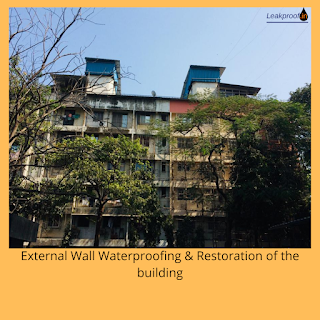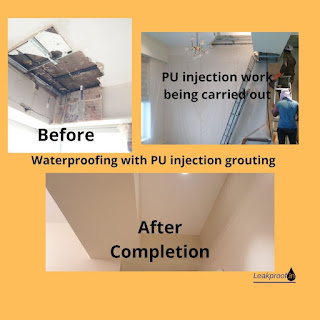Importance of Basement Waterproofing in Commercial Buildings
Modern commercial buildings, especially high-rises,
heavily depend on their basement facilities to function efficiently. Basements
house critical support systems such as facility offices, control rooms, parking
spaces, and utility services. While these may not be the building's primary
functions, they are integral to its operation and success.
From corporate offices and hotels to hospitals
and mixed-use commercial spaces like malls, basement spaces play a
pivotal role. However, basement leakage is a recurring challenge that,
if ignored, can compromise structural integrity and operational efficiency.
Common Causes of Basement Leakage
- Sub-Soil
Water Pressure
- Groundwater
exerts hydrostatic pressure on basement walls and floors. Over time, this
pressure can lead to seepage and leaks, especially if the waterproofing
system is inadequate or compromised.
- Service
Lines and Pathways
- Water
and drainage pipelines, HVAC systems, and utility conduits in basements
often act as pathways for water ingress. Any cracks, voids, or
poor concealment in these services can result in leaks, necessitating basement
waterproofing solutions.
- Frequent
Changes in Mixed-Use Buildings
- Mixed-use
buildings often undergo modifications, with users relocating facilities
or altering layouts. These changes, particularly at ground and
first-floor levels, can damage waterproofing systems, leading to
leakage into the basement.
Steps to Diagnose and Resolve Basement Leakages
Addressing basement leakage issues begins with
understanding the affected area and mapping the root cause of the problem. This
includes assessing:
- Leakage
patterns: Identifying where and how water is entering.
- Pathways:
Determining the routes water takes to reach basement walls, floors,
and ceilings.
- Extent
of damage: Evaluating structural deterioration caused by prolonged
water exposure.
Effective Basement Waterproofing Solutions
Once the problem areas and root causes are identified, the basement
waterproofing process involves:
- Reinforcing
Walls and Floors
- Cement,
Epoxy, and PU Grouts: These materials are used to seal cracks, fill
voids, and strengthen basement structures. This addresses existing leaks
and prevents future seepage.
- Ground
Stabilization
- The
soil around the building is reinforced, and gaps, cracks, and voids along
service lines are meticulously filled to prevent water infiltration.
- Repairing
Service Lines
- Direct
leaks in water supply and drainage pipelines are repaired, particularly
at ground and first-floor levels, to eliminate their impact on the
basement.
Case Study: Basement Waterproofing in a Mumbai Commercial
Building
A high-rise commercial building in Mumbai faced
persistent basement leakage problems due to:
- Sub-Soil
Water Pressure: Over the years, neglect worsened the leaks.
- Service
Line Cracks: Poorly concealed pipelines developed cracks and voids,
allowing water seepage.
- User-Induced
Modifications: Frequent layout changes damaged the building’s waterproofing
system.
Solution Implemented
- Reinforcement
of basement walls and floors using a combination of cement, epoxy,
and PU grouts.
- Ground
stabilization around the building, sealing voids along service lines.
- Repair
of leaking water supply and drainage systems.
Benefits of Basement Waterproofing
- Prevents
Structural Damage: Protects the building’s foundation and load-bearing
structures from water damage.
- Enhances
Usability: Keeps basement areas dry and functional for critical
services.
- Reduces
Maintenance Costs: Minimizes the need for frequent repairs and
operational disruptions caused by basement leakage issues.
- Improves
Property Value: A leak-free building is more appealing to buyers and
tenants, ensuring long-term returns.
Conclusion
Basement waterproofing is a critical component of
maintaining commercial buildings. From addressing sub-soil water leakage
to repairing service lines and reinforcing structures, effective solutions
ensure long-term durability and operational efficiency.
Ignoring basement leakage issues not only compromises
the building’s structural integrity but also increases long-term maintenance
costs. By implementing proactive waterproofing systems, you can protect
your building’s foundation, enhance usability, and boost property value.
For expert basement waterproofing services tailored
to your building’s needs, Contact Leakproof.in today!




Comments
Post a Comment